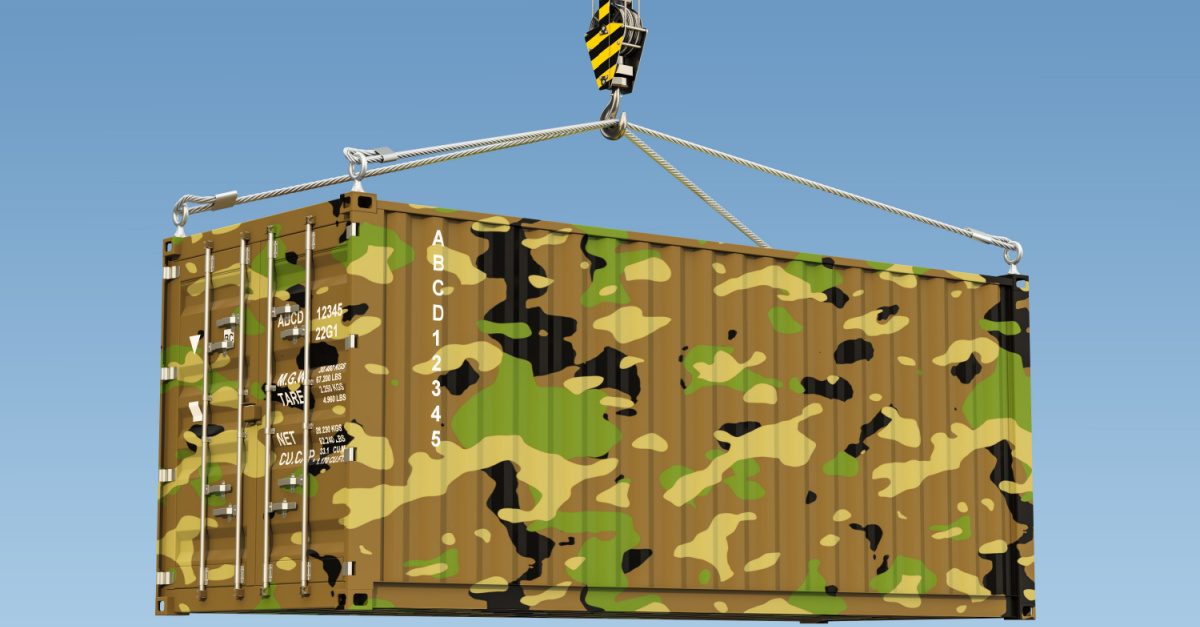
Military Logistics: The Role Of A Tactical Operations Centre
‘Soldiers win battles. Logistics wins wars’ — this quote is attributed to Major General John Pershing, who commanded the American Expeditionary Forces during World War I.
Commanding up to two million soldiers in the war’s final year, Pershing understood the importance of keeping them well-supplied with essentials on the frontlines. Other military leaders like Omar Bradley have followed his example since. Fast forward to the present: the quote still holds a candle to modern warfare, one example being Russia’s invasion of Ukraine. Military analysts have cited Russian logistical problems as a significant contributor to its failure to take the Ukrainian capital of Kyiv in the opening days. Nowhere was this more apparent than in the stalled 40-mile (64 km) convoy, owing to fuel and food shortages. Military Logistics has evolved over time as technology has advanced and money has been invested in advancing the capabilities of the military.
Any plan to win a war always involves logistics, starting with the heart of any military operation: the tactical operations centre (TOC). This article will delve deep into a TOC’s role in maintaining sound logistics on the battlefield.
Basic TOC Functions
According to a manual prepared by the US Army Training and Doctrine Command, a TOC is a command-and-control hub that aids operation commanders in making sound decisions on the fly. Everything from planning a mission to ensuring its success happens in this vital structure.
TOCs are often portable, combat-proven military structures loaded with technology, tables, and competent staff. But they can also be deployed at the back of a truck to coordinate the actions of lower-echelon units (e.g., platoon, company, etc.).
The manual also states that a TOC fulfils six basic functions:
- Receiving information, such as orders from the upper echelons and live reconnaissance
- Distributing information to military personnel on the field and upper-echelon HQ
- Performing predictive analysis based on the information received
- Submitting recommended courses of action to the operations commander
- Integrating force multipliers (more below)
- Coordinating the application of said force multipliers
A TOC can still be an indispensable asset when it isn’t fighting in wars. As the military’s role extends to emergencies like a natural calamity, coordinating the use of assets for bringing relief supplies to affected populations warrants a TOC’s command and control.
Force Multiplication
The last two functions, integrating and coordinating force multipliers, are the most relevant to logistics. Force multipliers generally refer to factors that augment the effectiveness of military manpower or assets by a factor.
One example is the aircraft carrier. There are plenty of force multipliers aboard a single carrier, some of which include the following:
- The vessel itself, which brings air power to bear virtually anywhere in the world
- Embarked fixed and rotary-wing aircraft, granting it operational flexibility
- Mode of launching fixed-wing aircraft (catapult assisted or ski jump)
- Combat Information Centre (CIC) that coordinates flight operations
- The thousands of sailors trained and assigned in various aspects of carrier operations
In that regard, logistics is as much a force multiplier as an aircraft carrier. It has plenty of moving parts that can give a country’s armed forces the edge should it switch gears between peace and wartime.
A study of the armed forces of the Gulf Cooperation Council member-states (Oman, Bahrain, Saudi Arabia, Qatar and the United Arab Emirates) found that their current logistics systems were ill-equipped to handle the rigours of military operations. All because of their overreliance on coalition allies and excessive build-up of spare stocks and assets.
The study notes that high-tempo operations can significantly reduce the number of available assets by 70% over 30 days.
These losses are often a result of the following:
- Increased usage frequency
- Repairing battle damage
- Ineffective surge contracting
- Inadequate strategic reserves
- Disruption in the supply line
- Ineffective information management
The study’s recommendations include allotting a dedicated information section, developing pre-operational logistical procedures and, more importantly, establishing an entity dedicated to logistical command and control. It isn’t hard to configure a TOC for logistics duties, as instead of coordinating combat troops, it’s overseeing the flow of supplies to and from the front.
Conclusion
While the aim should always be maintaining peace, the ongoing war in Ukraine proves that a full-scale war can erupt anytime. Military logistics must be ready to switch to high gear if the situation demands it. As history has proven time and time again, the timely arrival of supplies to the front can mean the difference between success and failure.
TOCs are ideal for managing every facet of logistics due to their fundamental role in managing force multipliers. With one at the helm, a country’s military can prevent most assets from being lost to wear and tear instead of actual operations.

Whether you’re currently serving, have served or are a veteran of the Armed Forces, or whether you are employed by the MoD in a civilian capacity, the Institute of Supply Chain Management (IoSCM) can help you to develop your career.
Whether you’re interested in a Professional Qualification, short courses or IoSCM Membership we have the tools to support you.
